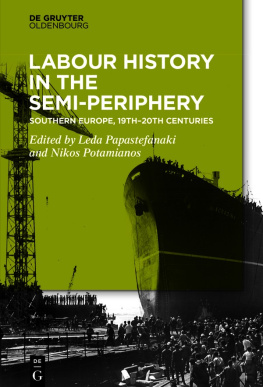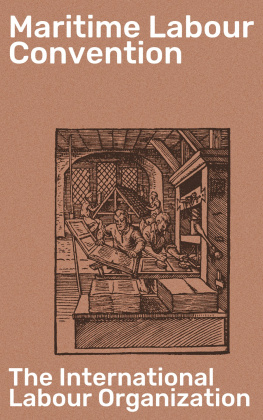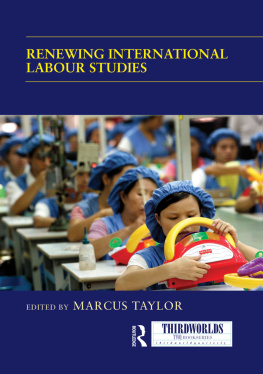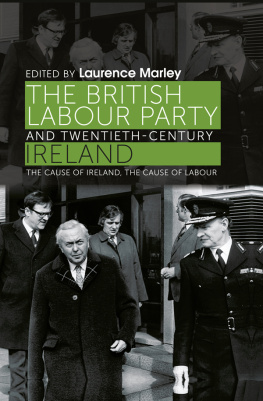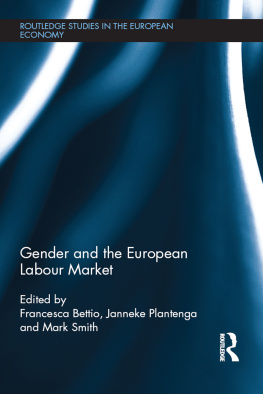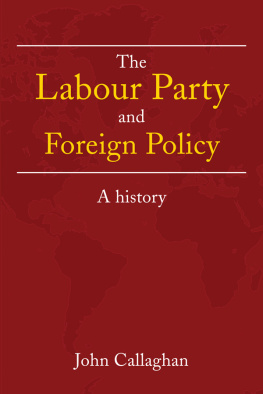Centuries of Child Labour
To Ville and Otto
Centuries of Child Labour
European Experiences from the Seventeenth to the Twentieth Century
Marjatta Rahikainen
University of Helsinki, Finland
First published 2004 by Ashgate Publishing
Published 2017 by Routledge
2 Park Square, Milton Park, Abingdon, Oxon OX14 4RN
711 Third Avenue, New York, NY 10017, USA
Routledge is an imprint of the Taylor & Francis Group, an informa business
Copyright Marjatta Rahikainen 2004
Marjatta Rahikainen has asserted her moral right under the Copyright, Designs and Patents Act, 1988, to be identified as the author of this work.
All rights reserved. No part of this book may be reprinted or reproduced or utilised in any form or by any electronic, mechanical, or other means, now known or hereafter invented, including photocopying and recording, or in any information storage or retrieval system, without permission in writing from the publishers.
Notice:
Product or corporate names may be trademarks or registered trademarks, and are used only for identification and explanation without intent to infringe.
British Library Cataloguing in Publication Data
Rahikainen, Marjatta
Centuries of child labour : European experiences from the seventeenth to the twentieth century. (Studies in labour history)
1. Child labour Europe History 2. Children Europe History
I. Title
331.3'1'094
Library of Congress Cataloging-in-Publication Data
Rahikainen, Marjatta
Centuries of child labour : European experiences from the seventeenth to the twentieth century / Marjatta Rahikainen.
p. cm. (Studies in labour history)
Includes bibliographical references and index.
ISBN 0-7546-0498-5 (alk. paper)
1. Child laborEuropeHistory. I. Title. II. Studies in labour history (Ashgate (Firm))
HD6250.E8512R34 2004
331.3'1'0940903dc22
2003063542
ISBN 13: 978-0-7546-0498-3 (hbk)
Labour history has often been a fertile area of history. Since the Second World War its best practioners - such as E.P. Thompson and E.J. Hobsbawm, both Presidents of the British Society for the Study of Labour History - have written works which have provoked fruitful and wide-ranging debates and further research, and which have influenced not only social history but history generally. These historians, and many others, have helped to widen labour history beyond the study of organised labour to labour generally, sometimes to industrial relations in particular, and most frequently to society and culture in national and comparative dimensions.
The assumptions and ideologies underpinning much of the older labour history have been challenged by feminist and later by postmodernist and anti-Marxist thinking. These challenges have often led to thoughtful reappraisals, perhaps intellectual equivalents of coming to terms with a new post-Cold War political landscape.
By the end of the twentieth century, labour history had emerged reinvigorated and positive from much introspection and external criticism. Very few would wish to confine its scope to the study of organised labour. Yet, equally, few would wish now to write the existence and influence of organised labour out of nations' histories, any more than they would wish to ignore working-class lives and focus only on the upper echelons.
This series of books provides reassessments of broad themes of labour history as well as some more detailed studies arising from recent research. Most books are single-authored but there are also volumes of essays centred on important themes or periods, some arising from major conferences organised by the Society for the Study of Labour History. The series also includes studies of labour organisations, including international ones, as many of these are much in need of a modern reassessment.
Chris Wrigley
British Society for the Study of Labour History
University of Nottingham
The academic community has a feature that I have learned to appreciate and for which I have been grateful when writing this book. In the spirit of collegial solidarity, for the love of history, or out of the kindness of their hearts, but always without profiting themselves from it, all the people I asked were prepared to give their time and effort to answering my questions and commenting on what I had written. I am also grateful and much indebted to the hundreds of scholars without whose work this book would not have materialised. The notes and bibliography fail to do justice to all of them.
The person to whom I owe my warmest thanks is Colin Heywood. He did such a good job reviewing the entire manuscript, the kind of job that only a few busy academics would or could do in addition to all their other obligations. His comments were always to the point and his criticism justified. Riitta Hjerppe and Klas Nyberg also read and commented on the entire text, and I am most grateful to them for their wise observations and critical remarks. Others who commented on some parts of the text include (in alphabetical order) Jos M, Borrs Llop, Laura Guidi, Sakari Heikkinen, Ottavia Niccoli, Matti Peltonen, Tarja Risnen, Carmen Sarasa Garca, Jrgen Schlumbohm and Richard Wall. All of them came with fruitful insights and valuable feedback, and helped me to correct a number of errors and misinterpretations. Discussions with Leonid Borodkin and David Ransel helped me to understand better the conditions of children in Russia. Furthermore, Serge Chassagne helped me to find the nineteenth-century French statistics I needed and Ola Honningdal Grytten did the same concerning Norwegian statistics.
The first embryonic version of this work was read and commented on by Aura Korppi-Tommola, Panu Pulma and Johan Sderberg, and parts of it by Kaisa Kauranen and Toivo Nygrd. The first version focused on the history of child labour in Finland and Sweden. It would never have changed into a history of child labour in Europe had not Jo Campling and Rauno Endn been there just in time to push me to write for an international readership.
Discussions with my Finnish friends and colleagues were most important in the slow shaping of this work. Beatrice Moring first introduced me to the family-history approach, and generously shared with me her profound knowledge of rural life, while Kirsi Vainio-Korhonen equally generously shared with me her knowledge of early-modern urban life. My former and present colleagues at the Department of Social Science History, University of Helsinki, have patiently answered my questions on various issues, and discussions around the coffee table have been a constant source of information and pleasure.
The long bibliography is an indication that I have bothered a great number of library staff. am particularly grateful to those at the Library of the Finnish Parliament and at the Helsinki University Library. Terttu Turunen at the Social Science Library of the University of Helsinki first helped me to find my way in the international library databases, and Liisa Koski at the Helsinki University Library then performed miracles in terms of interlibrary loans.
I am also greatly indebted to Joan Nordlund for her skilful and patient correcting of my home-made English to produce a much more readable text.


